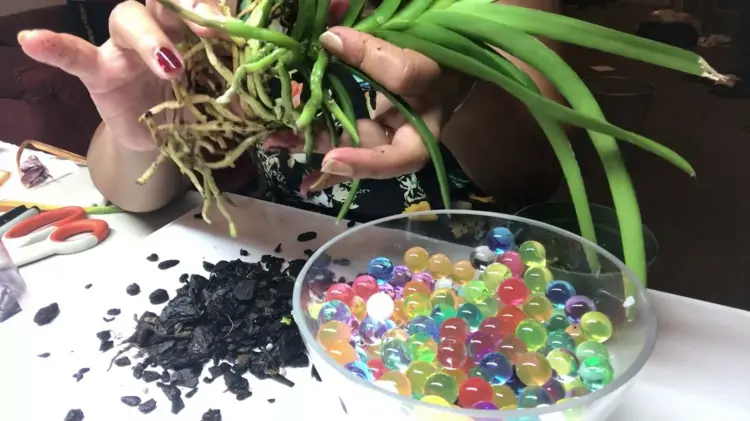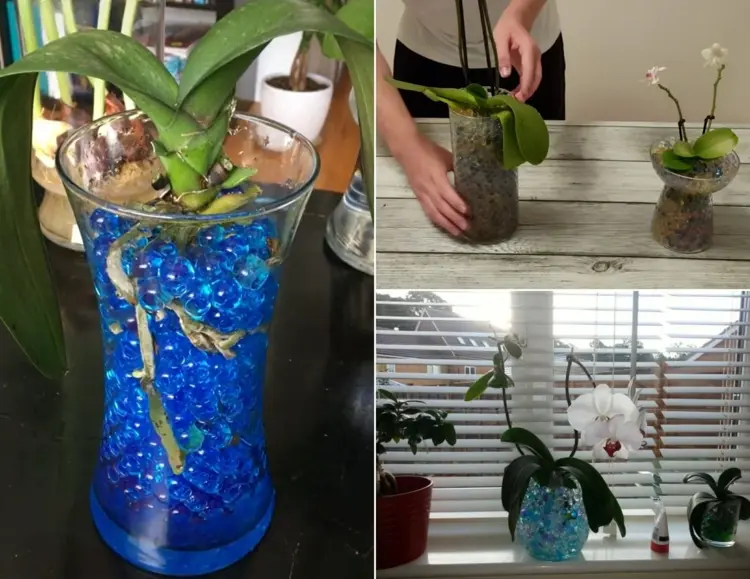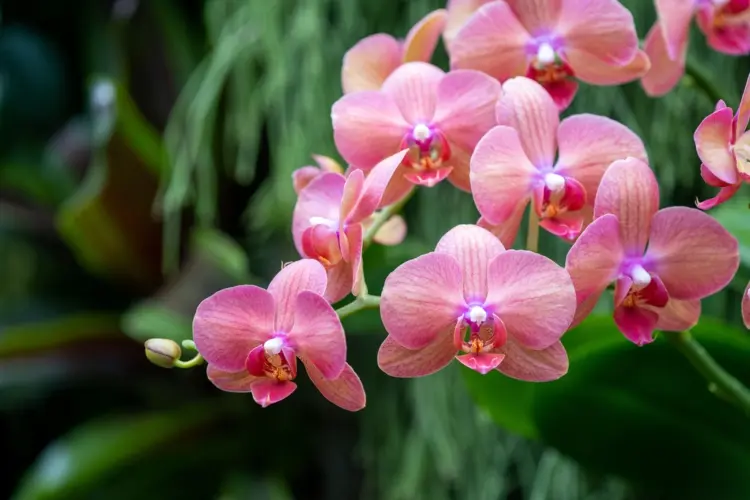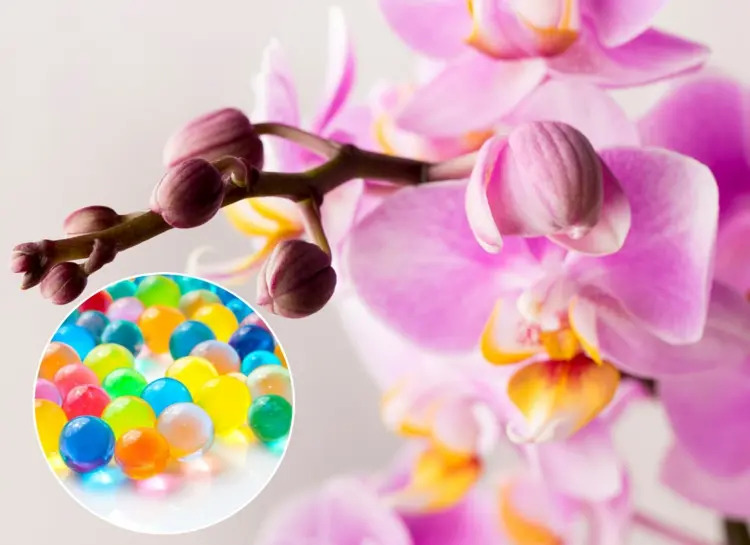We have already explained to you that and how to cultivate orchids without soil and in water. We also mentioned the suitable alternative substrates. Now you are seeing another cool variety that is said to be used for hydroponics and is also very decorative. We mean the pretty water balls, which are guaranteed to be eye-catchers. But what should you consider if you want to grow orchids in a jar with water pearls and is that okay in the long run? To ensure that your flowers continue to do well, we would like to summarize the advantages and disadvantages for you.
Transparent water pearls as a substrate – what is this about?
Sleek and shiny, that’s how most of us have always seen these interesting pearls. But before they take on this form, they must first rest in water. Before that, the water beads made of absorbent polymers are smaller and firm. It takes a full 6 to 8 hours for them to be completely saturated.
Using Water Beads – Instructions

- So put the beads in a container with enough water for several hours. This does not have to be the final vessel, because you are only preparing the balls. You can do this step, for example, in the evening before you go to bed so that you can use the beads first thing in the morning.
- After the water beads for plants are soaked, you should drain the excess water. For example, use a sieve.
- Take the planter in which you want to plant the orchid. Of course, this should also be transparent so that the beads can be seen. Glass (also colored if you like) or transparent plastic, for example, are well suited.
- Hold the plant in the jar, being careful not to pinch any roots on the bottom.
- Then you can enclose the orchids in the glass with water pearls. To do this, simply let the beads fall loosely between the roots in the glass vase until everything is completely filled.
A notice: Since tap water contains quite a lot of lime, which orchids don’t particularly like anyway, it is advisable to use rainwater. Of course, this should also be clean. Alternatively, if you don’t have rainwater available, you can boil tap water, which will remove most of the limescale. In this way you also prevent limescale deposits on the gel balls.
Properly care for orchids in the glass with water pearls
The plant is initially supplied with sufficient liquid by the saturated water balls, which saves you watering/dipping every week or two. However, since the water from the pearls gradually evaporates, sooner or later you will have to soak the balls again. This can be recognized by the fact that they shrink and no longer look so slippery.
For this purpose you also take the orchid out again. It is best to put the water pearls in a sieve and rinse them well first to clean them, because algae also form over time. After that, submerge them again for a few hours as instructed above. To be able to fertilize the plant, simply add the usual liquid fertilizer to the rainwater in which you soak the gel beads.
Now, hand on heart: is that really such a good idea?

If you read through the opinions of experts and orchid friends, you quickly realize that opinions differ. Some say this is nothing more than hydroponics, while others claim the balls give off too much moisture, drastically increasing the risk of root rot and plant death. What is it now?
Orchids in a glass with water pearls – yes or no?
In fact, the constant planting and replanting to soak and clean the water balls is quite stressful for the plant. Just when she has gotten used to the new environment to some extent, she has to go out again. And this back and forth naturally drains their strength.
Regarding the amount of moisture, it is difficult to judge what is right and what is wrong. Hydroponics alone proves that wet feet do not always mean the same bad consequences for the plant and I myself have often enough left my orchids in their usual bark substrate completely in water for months (but without constant planting out) and they did wonderfully .

So when you consider this pretty decoration with water pearls and flowers, all you have to do is simply test how your orchid reacts to it. Watch the plant for changes in the leaves and roots, and if it shows even the slightest sign that it might be unwell, switch back to the usual substrate.
According to experience reports, the gel balls disintegrate after a few months. Of course, if that were to happen, you would also ruin the plant. It is therefore important to change the pearls regularly in any case. On the whole, however, it doesn’t seem like a good idea to cultivate plants of any kind this way for long periods of time. If you want to cultivate an orchid in water culture, it is better to use proven methods or filling materials. However, you could also exceptionally use this decoration idea for special occasions.
Tip for cut flowers
In general, orchids in jars with water pearls tend to be displayed in the form of cut flowers. This looks much prettier in a transparent vase than boring stems in water. But you should also pay attention to something: As you know, the cut flowers must of course be in water. However, if you were to fill the vase with the pearls with water, as you would normally do, the gel balls would no longer come into their own. Therefore only fill the lower area with water. However, this method is not suitable for large bouquets that require a lot of water.

You can read here what you should consider when planting an orchid in glass.